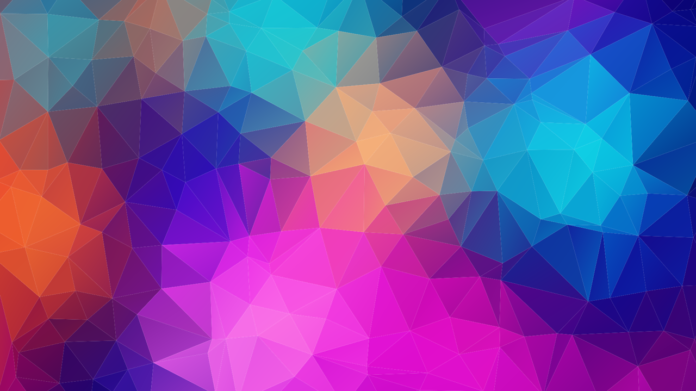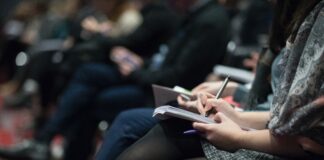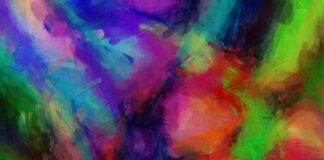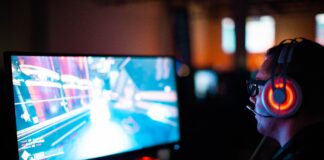AI in behind-the-scenes photos is revolutionizing the way we capture and interact with imagery in the entertainment, fashion, and event industries. As technology advances, artificial intelligence (AI) is increasingly influencing how behind-the-scenes images are created, enhanced, and curated. Whether it’s for film production, fashion shoots, or corporate events, AI is playing a pivotal role in transforming the creative process and improving the quality of these photos. From image enhancement to facial recognition and automatic tagging, AI is shaping how we produce, manage, and experience behind-the-scenes photos. Understanding the ten most crucial things about AI in behind-the-scenes photos can help you appreciate the technology’s potential in this area and how it enhances both the artistic and technical aspects of photography.
1. AI-Based Image Enhancement for Behind-the-Scenes Photos
One of the most significant advancements AI in behind-the-scenes photos has brought to the table is the ability to enhance image quality automatically. AI algorithms can now intelligently adjust lighting, color balance, sharpness, and contrast to improve photos taken in less-than-ideal environments, such as dimly lit backstage areas or event spaces. These tools analyze the original image and apply the optimal adjustments based on the context of the photo and its content.
This ability to enhance photos instantly saves both time and effort for photographers and creatives. What once would have required hours of manual editing in Photoshop can now be done in seconds, freeing up professionals to focus on the more creative aspects of photography while allowing them to maintain high-quality standards.
2. AI-Powered Facial Recognition for Categorizing Photos
For professionals working with a high volume of behind-the-scenes photos, organizing and categorizing images can be a daunting task. AI-powered facial recognition technology simplifies this process by automatically identifying individuals in photos. This tool is especially useful in environments where multiple people are involved, such as on movie sets, fashion shoots, or corporate events.
AI algorithms can analyze the facial features in each image and match them with previously tagged photos of known individuals. This allows for the rapid organization of images into folders based on the people featured in them, streamlining the entire process. By reducing manual labor, AI enhances workflow efficiency for photographers, event planners, and production teams.
3. Automatic Tagging and Metadata Generation with AI
Another powerful feature of AI in behind-the-scenes photos is its ability to generate tags and metadata automatically. AI systems can recognize elements within photos such as objects, people, locations, and even emotions, generating relevant keywords and descriptions without human input. This is extremely valuable for those managing large photo libraries, as it enables faster searching and categorization of content.
For example, AI might tag a photo with keywords like “film set,” “director,” or “fashion model,” making it much easier for creative teams to search for and retrieve specific images. The automatic generation of metadata also improves the discoverability of content on digital platforms, enhancing the user experience and accessibility of photos.
4. AI for Real-Time Image Editing During Photoshoots
One of the more groundbreaking ways AI is changing behind-the-scenes photography is through real-time image editing during shoots. Using AI-driven software, photographers can instantly view how their photos will look with different filters, lighting adjustments, or special effects applied. This immediate feedback allows photographers and creative teams to adjust their shots as they go, reducing the time spent on post-production.
This real-time editing process not only speeds up the workflow but also offers more creative control during shoots. By experimenting with various looks instantly, photographers can explore multiple visual styles before finalizing the shot, leading to more dynamic and innovative photography.
5. AI-Powered Content Curation and Selection
Behind-the-scenes photos often come in large volumes, and selecting the best images can be a time-consuming task. AI can assist in this process by analyzing photos based on composition, lighting, subject, and other key attributes, helping photographers and curators select the most compelling images for the final collection. AI can even help determine which photos are most likely to engage viewers or perform well on social media platforms, guiding content strategy and promotion.
AI-powered curation tools can streamline the selection process, eliminating the need for manual sorting and allowing creatives to focus on showcasing the images that best capture the story or message behind the scenes.
6. AI in Visual Storytelling for Behind-the-Scenes Photos
One of the most important roles of behind-the-scenes photography is telling a story – whether it’s capturing the chaos of a movie set, the excitement of a fashion shoot, or the preparation behind a live event. AI can enhance the storytelling aspect of these photos by analyzing the narrative context and offering suggestions on how to frame and highlight specific moments.
AI can also be used to create personalized photo albums or digital stories by automatically grouping related images, based on their content or theme. This kind of automated visual storytelling can help brands, influencers, and artists build more compelling narratives with minimal effort, while AI tools adjust the visual flow to match the intended tone of the story.
7. AI for Image Restoration and Repair
AI is also playing an important role in restoring and repairing old or damaged behind-the-scenes photos. AI image restoration tools can detect and fix issues such as pixelation, scratches, or blur, bringing clarity to older images or photos that might have been degraded over time. This technology uses machine learning algorithms to analyze patterns in the image and fill in gaps, creating a restored version that looks like it was shot with modern equipment.
For photographers working with archival material, AI-powered restoration tools can breathe new life into old behind-the-scenes photos, allowing these images to be shared, displayed, or preserved for future generations without losing their historical value.
8. AI for Enhanced Color Grading
Color grading is a crucial step in photography, especially for behind-the-scenes photos that may need to match a particular aesthetic or mood. AI is increasingly being used to automate this process, adjusting color tones, saturation, and contrast to create a cohesive visual style across a series of photos. AI-powered color grading tools can learn the preferences of photographers or specific brands, applying consistent color schemes that align with their vision.
By utilizing AI for color grading, photographers can maintain consistency throughout their work, improving the overall visual appeal of behind-the-scenes photos without spending excessive time on manual edits.
9. AI for Background Removal and Manipulation
Another way AI is transforming behind-the-scenes photos is by simplifying the process of background removal and manipulation. AI tools can automatically detect and separate the subject of the photo from the background, making it easy to replace or blur out the background. This is particularly useful in product photography, fashion shoots, or event photos, where a clean or customizable background is often needed.
By using AI for background manipulation, photographers and editors can focus on enhancing the subject matter of the photo while letting the AI handle the tedious task of background adjustment, saving time and improving the quality of the final image.
10. AI for Predicting Audience Preferences and Trends
AI can also be used to predict trends in behind-the-scenes photography by analyzing audience preferences and behavior. By tracking which images or styles generate the most engagement on social media platforms or within a brand’s content strategy, AI can provide valuable insights into what resonates with the audience. This allows photographers and brands to tailor their behind-the-scenes photos to meet the tastes and expectations of their target demographic.
In this way, AI in behind-the-scenes photos can be used not only to enhance the creative process but also to inform future photo shoots and content strategies, ensuring that the right images are produced to maximize viewer engagement.
Conclusion
As AI in behind-the-scenes photos continues to evolve, its influence on the creative and production processes will only grow. From enhancing image quality and facilitating real-time editing to automating content curation and restoration, AI is becoming an essential tool for photographers, content creators, and event planners across various industries. By leveraging AI technologies, professionals can streamline workflows, improve the visual quality of their images, and provide a more engaging and personalized experience for their audiences. As the capabilities of AI expand, it’s clear that this technology will continue to reshape the way we capture, share, and experience behind-the-scenes photos in the years to come.














